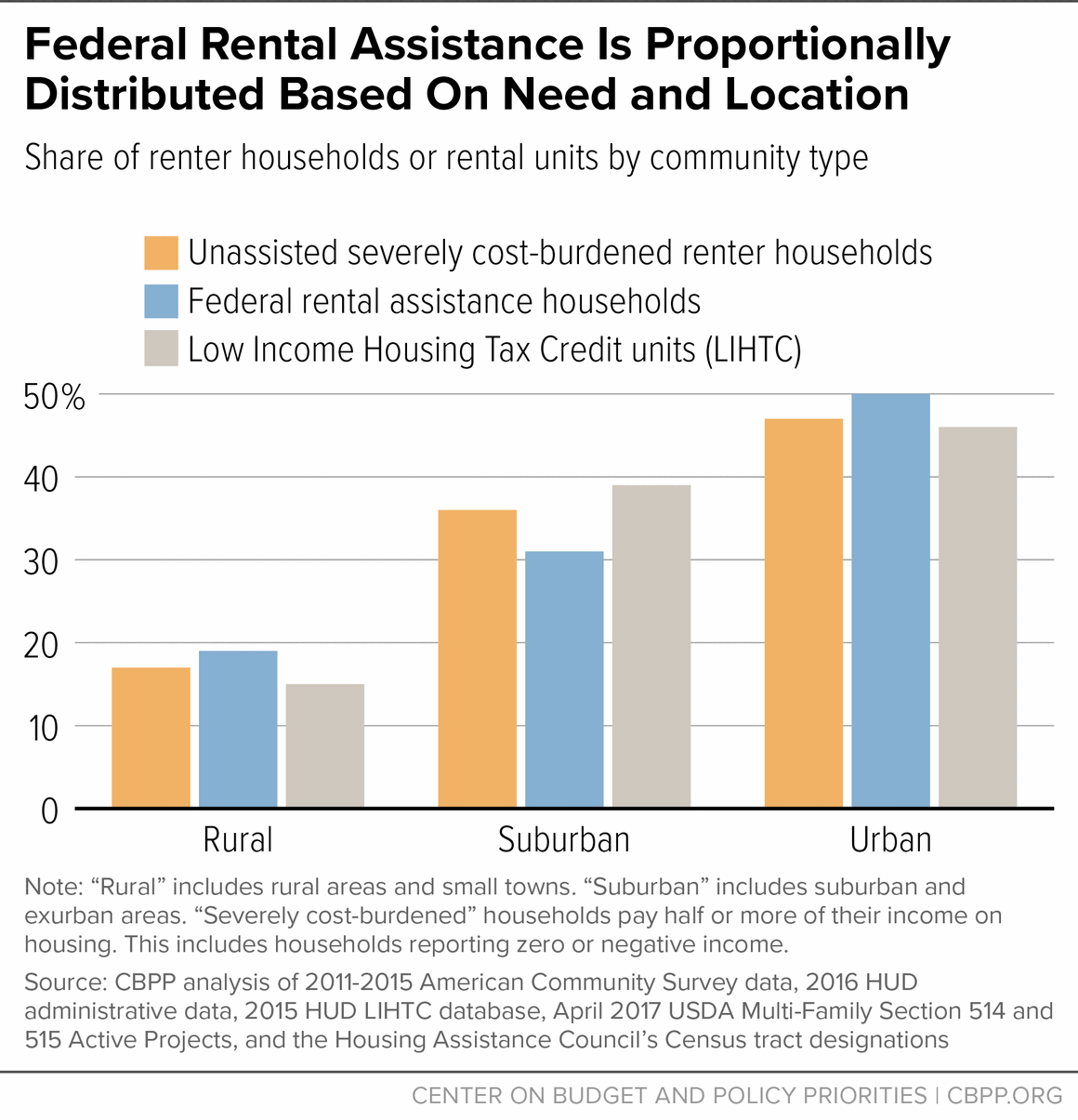BEYOND THE NUMBERS
Federal rental assistance plays a vital role in urban, suburban, and rural communities alike, our new analysis shows, helping 10 million people in over 5 million low-income households afford stable housing. In all types of communities, however, the vast majority of renters in need get no assistance due to funding limits. For every assisted household, roughly three other renter households pay half or more of their income for housing.
While affordable housing falls far short of need in all types of communities, our new analysis shows that federal rental assistance, as a whole, is proportionally distributed among communities relative to where “severely cost-burdened” renter households are located (see chart). (Severely cost-burdened renters pay half or more of their income for housing.)
Half of federally assisted households live in urban neighborhoods, 31 percent live in suburban neighborhoods, and just under a fifth live in rural areas, closely mirroring the location of severely cost-burdened renters. Although assisted households are roughly split between urban and non-urban areas nationally, the picture varies greatly among individual states.
Despite the agency’s name, the Department of Housing and Urban Development’s (HUD) rental assistance does not go exclusively to urban neighborhoods. Over 2.1 million suburban and rural households rely on HUD programs to keep a roof over their heads. Similarly, the Agriculture Department’s Rural Rental Assistance program supports renters living in both rural and non-rural areas, with nearly 30 percent of households located in suburban and urban areas.
Units that developers build or rehabilitate using the Low Income Housing Tax Credit (LIHTC), the nation’s main source of funds for creating affordable rental housing, are slightly more concentrated in suburban neighborhoods relative to unassisted renters who pay half or more of their income for housing. The LIHTC units make it easier for some relatively higher-income, severely cost-burdened renters to afford a unit. But, because LIHTC rents aren’t based on household income, they’re rarely affordable to extremely low-income families unless the family also has another form of rental assistance. Half of LIHTC households receive other rental assistance, such as a housing voucher or project-based rental assistance.
Our new analysis features interactive state and national data by program and location, which can help national policymakers and analysts better understand who federal rental assistance programs serve and also help state and local policymakers and stakeholders set priorities for their housing investments.

